Care, features of growing thuja varieties Columna
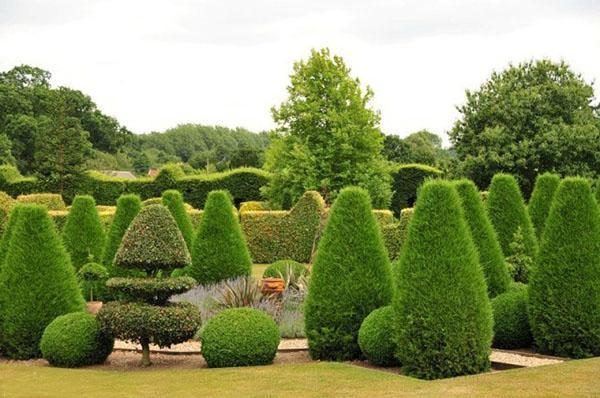 Thuja Columna is one of the most popular evergreen conifers. Belongs to the Cypress family. Most often, "Western" is attributed to its name, since its name in the scientific literature includes the word "occidentalis", which means Western. It is a plant of the gymnospermous conifer genus, widely used in landscape design around the world. It can be seen not only in public parks, but also on the territory of private estates.
Thuja Columna is one of the most popular evergreen conifers. Belongs to the Cypress family. Most often, "Western" is attributed to its name, since its name in the scientific literature includes the word "occidentalis", which means Western. It is a plant of the gymnospermous conifer genus, widely used in landscape design around the world. It can be seen not only in public parks, but also on the territory of private estates.
Thuja Columna: description
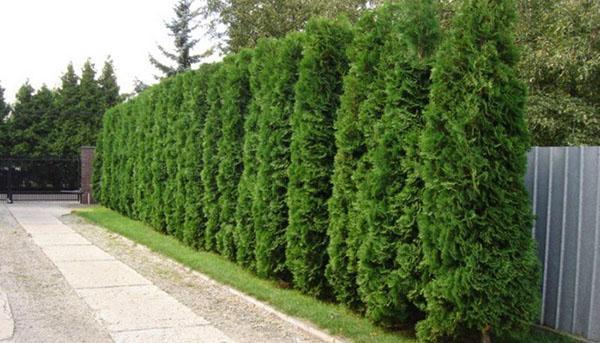 This plant is characterized by a narrow, fairly dense cone-like crown. A mature tree can grow up to 10 meters in height, but in most cases, growth stops at 8 meters. The needles have a characteristic shine, thick and bright green color.
This plant is characterized by a narrow, fairly dense cone-like crown. A mature tree can grow up to 10 meters in height, but in most cases, growth stops at 8 meters. The needles have a characteristic shine, thick and bright green color.
Thuja western Columna is a long-liver among trees. This factor is strongly reflected in the rate of its growth. In just 12 months, a young plant can gain up to 15 cm in height. At the same time, its crown is distributed in diameter up to 5 cm annually. In winter, the needles slightly change their usual appearance, acquiring a slightly brown tint, which becomes less noticeable already in the spring. In cold regions of growth, this process is even more intense. The bark of the tree turns reddish brown.
The fruits of Tui Columna are small buds that turn brown towards autumn. The seeds of the tree are two-winged. They are flat and appear already in the first year of plant life. The root system is characterized by thin and dense processes of mycorrhizal type (similar to the mycelium of the fungus).
Experts recommend planting a coniferous tree at a certain depth - preferably no more than 80 cm. It is better to choose a place for this protected from strong winds. The distance between the landings should be at least one and a half meters. If you are going to plant young seedlings in several rows, the distance can be reduced.
Growing features
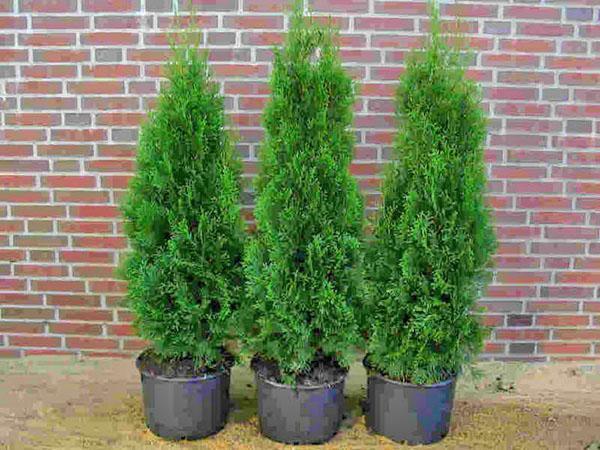 In order for a tree to grow quickly and remain healthy, careful attention is required to the planting process. If you do not follow the rules of care, the condition of the thuja Columna will deteriorate very quickly and the plant will simply stop growing. The tree requires seeds to propagate. The plant is most often used in landscape design to create hedgestherefore planting should be done in groups. If the project for decorating a garden plot allows, single plantings can also be used.
In order for a tree to grow quickly and remain healthy, careful attention is required to the planting process. If you do not follow the rules of care, the condition of the thuja Columna will deteriorate very quickly and the plant will simply stop growing. The tree requires seeds to propagate. The plant is most often used in landscape design to create hedgestherefore planting should be done in groups. If the project for decorating a garden plot allows, single plantings can also be used.
This type of thuja is quite resistant to low temperatures, so you should not worry about the plant wintering in frost. However, in order to still protect young seedlings in the first two to three years after planting, it is worth covering them. In the spring, it will be difficult for them to endure intense ultraviolet light, so at this time they should also be shaded. It is necessary to ensure that the seedlings do not have a lack of moisture, since in this case they will begin to lose their juiciness and dry out quickly. As a top dressing (during the planting process), it is recommended to use a nitroammophoska.
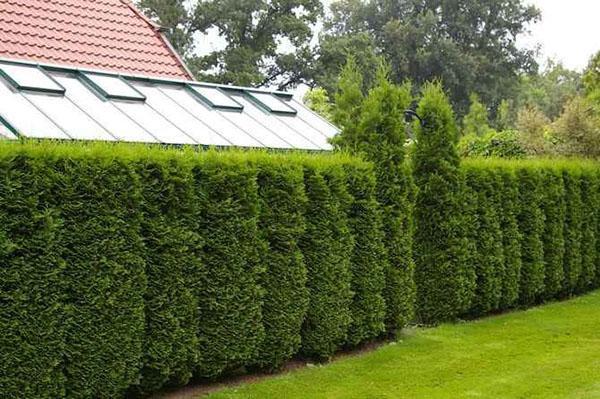 Thuja Columna, whose photos are presented in a wide variety, is an evergreen slender plant. This tree has a high aesthetic value, so it can transform any garden area.
Thuja Columna, whose photos are presented in a wide variety, is an evergreen slender plant. This tree has a high aesthetic value, so it can transform any garden area.
An important quality thuja western Columna - the ability to easily tolerate the effects of harmful emissions in the atmosphere.This allows Thuja occidentalis' Columna to be planted in parks or even on highways.
Thuja Columna: planting and care
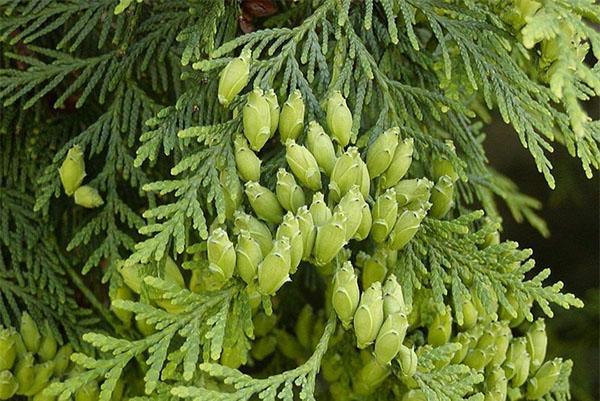 There are two ways to grow this plant:
There are two ways to grow this plant:
- Vegetative.
- From seeds.
The second option is quite troublesome and difficult. On average, the process of growing thuja from seeds takes at least 2 years, in most cases it takes up to 5 years. To collect seeds, the fruits of the tree are used, presented in the form of cones. They should be placed in a warm place until they open. Then they are soaked in plain water and only after that they are lowered into the ground. It is advisable to cover the ground with sawdust from a coniferous tree. This method of growing allows you to get fairly hardy seedlings, but at the same time they will not differ in an aesthetically attractive appearance.
It is much easier and faster to grow this plant if you purchase ready-made seedlings. It is very important to purchase only those specimens that are offered with a root ball of earth. Its presence will be a kind of guarantee that young trees will take root much easier. To plant them, you should dig a hole, the size of which should exceed the earthen lump at least 2 times. It is recommended to fill the soil with black soil with peat, and then tamp it thoroughly. If such garden land is not available, then it can be replaced with another fertile soil. The finishing touch on landing is abundant watering.
Differences from other varieties
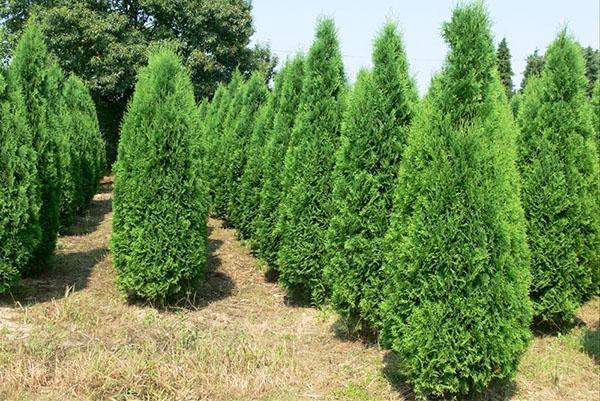 Thuja it has a wide variety of varieties, so every gardener can choose an option to their liking. Plants can differ from each other in growth rate, height, color and other parameters.
Thuja it has a wide variety of varieties, so every gardener can choose an option to their liking. Plants can differ from each other in growth rate, height, color and other parameters. 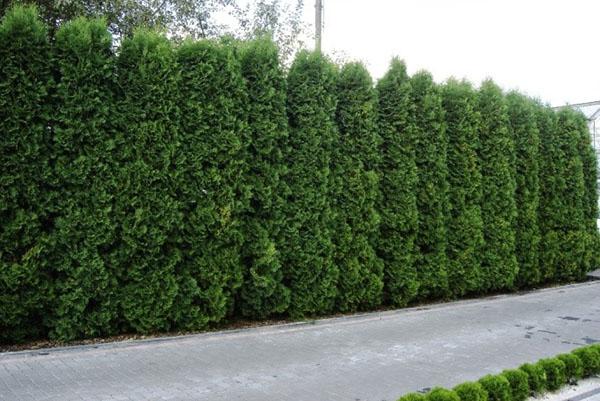 The most common varieties are thuja Columna or Smaragd. Which one is best for growing is difficult to say, since it all depends on personal preference.
The most common varieties are thuja Columna or Smaragd. Which one is best for growing is difficult to say, since it all depends on personal preference. 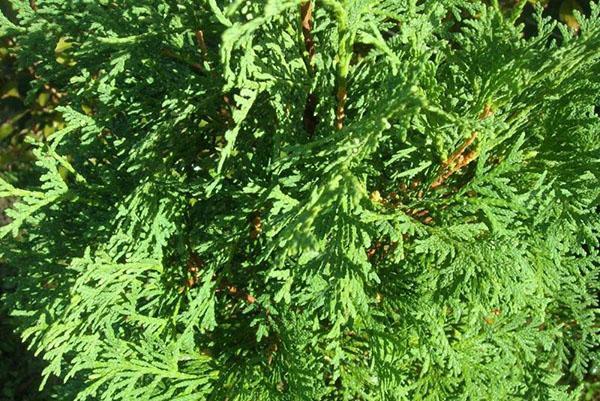 The determining factor when choosing is often the height of the hedge that is planned to grow.
The determining factor when choosing is often the height of the hedge that is planned to grow. 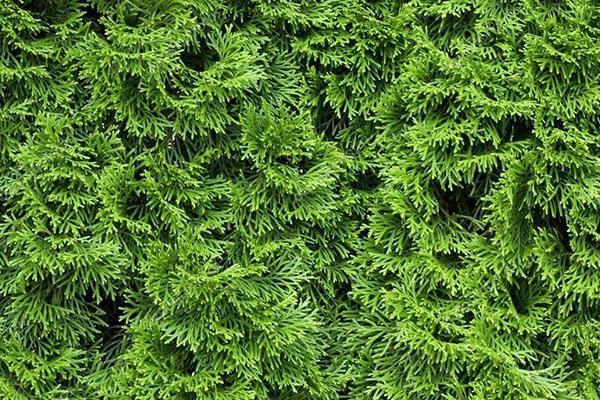 To determine the selection of the most suitable variety, you should carefully consider the features and properties of each of them.
To determine the selection of the most suitable variety, you should carefully consider the features and properties of each of them.
Video about the features of thuja Columna